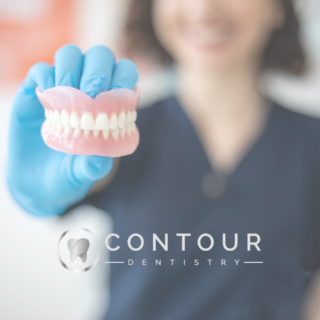
Dentures vs Partial Dentures
When it comes to replacing missing teeth, dentures, and partial dentures are two common options. While both serve a similar purpose, they differ in several key aspects. In this article, we'll explore the differences between dentures and partial dentures, including their benefits, drawbacks, and how to choose the right option for your dental needs.
What Are Dentures?
Dentures, also known as complete dentures, are removable dental appliances that replace all of the teeth in either the upper or lower jaw, or both. They are typically made of acrylic resin and can be customized to match the shape, size, and color of your natural teeth. Dentures are held in place by suction and the muscles of the mouth and can be easily removed for cleaning and maintenance.
Types of Dentures
There are two main types of dentures:
- Conventional Dentures: These are made after the remaining teeth have been removed and the gum tissue has healed, which can take several months. Conventional dentures are custom-fitted to your mouth for optimal comfort and function.
- Immediate Dentures: These are made in advance and can be placed immediately after the remaining teeth are removed. While immediate dentures offer the benefit of not having to be without teeth during the healing process, they may require more adjustments as the gums and bone heal and shrink over time.
What Are Partial Dentures?
Partial dentures, also known as partials, are removable dental appliances that replace one or more missing teeth. They are typically made of a combination of metal and acrylic resin and are designed to blend in with your natural teeth. Partial dentures are held in place by metal clasps that attach to your remaining natural teeth, providing stability and support.
Types of Partial Dentures
There are two main types of partial dentures:
- Traditional Partial Dentures: These are the most common type of partial dentures and are held in place by metal clasps that attach to your natural teeth. Traditional partial dentures are removable for cleaning and maintenance.
- Flexible Partial Dentures: These are made of a flexible material that blends in with your natural gum tissue, making them less noticeable than traditional partial dentures. Flexible partial dentures are held in place by the natural flexibility of the material and do not require metal clasps.
Dentures vs Partial Dentures: Key Differences
While both dentures and partial dentures serve the purpose of replacing missing teeth, they differ in several key aspects:
- Number of Missing Teeth: Dentures are used to replace all of the teeth in either the upper or lower jaw, or both, while partial dentures are used to replace one or more missing teeth.
- Stability: Dentures rely on suction and the muscles of the mouth for stability, while partial dentures are held in place by metal clasps that attach to the natural teeth, providing a more secure fit.
- Appearance: Dentures replace all of the teeth in a jaw, so they are designed to look like a full set of natural teeth. Partial dentures are designed to blend in with the natural teeth, so they are less noticeable.
- Cost: Dentures tend to be more expensive than partial dentures, as they require more materials and customization.
Benefits of Dentures and Partial Dentures
Both dentures and partial dentures offer several benefits:
- Improved Appearance: Dentures and partial dentures can improve the appearance of your smile by replacing missing teeth.
- Improved Speech: Dentures and partial dentures can help improve speech by replacing missing teeth that may affect pronunciation.
- Improved Chewing Ability: Dentures and partial dentures can improve chewing ability, making it easier to eat a variety of foods.
- Prevent Shifting of Teeth: Dentures and partial dentures can prevent the remaining natural teeth from shifting out of place.
Drawbacks of Dentures and Partial Dentures
While dentures and partial dentures offer many benefits, they also have some drawbacks:
- Adjustment Period: It may take some time to adjust to wearing dentures or partial dentures, especially when speaking and eating.
- Maintenance: Dentures and partial dentures require regular cleaning and maintenance to keep them in good condition.
- Bone Loss: Over time, wearing dentures or partial dentures can lead to bone loss in the jawbone, which can affect the fit of the dentures.
Choosing Between Dentures and Partial Dentures
When choosing between dentures and partial dentures, it's important to consider your specific dental needs and budget. If you are missing all of your teeth in a jaw, dentures may be the best option for you. However, if you are missing only a few teeth, partial dentures may be a more cost-effective and less invasive option.
Think you may be a good candidate for dentures? Contact us today!
Dentures and partial dentures are both viable options for replacing missing teeth. While dentures are used to replace all of the teeth in a jaw, partial dentures are used to replace one or more missing teeth. Both types of appliances offer benefits and drawbacks, so it's important to consult with your dentist to determine the best option for your dental needs. At Contour Dentistry, Dr. Patel and his team are ready to address your unique needs and preferences! We look forward to hearing from you.